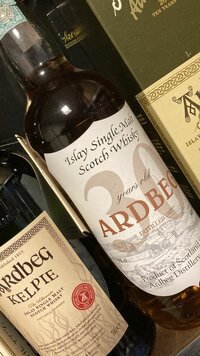How is peated whisky made?

Some examples of peated whisky are: Ardbeg, Caol Ila, Lagavulin, Talisker
What is Peated Whisky?
Peated whisky, also called peaty whisky, is distinguished by its smoky and earthy taste, which is obtained by the use of peated barley during the production process. Peat is a mixture of plant residues mined from swamps and used as fuel in drying barley.
Malting the Barley
The production process starts with malting barley, where the barley grains are first soaked in water to germinate. The germinated barley grains are then dried, traditionally over a peat fire. During drying, the smoke from the peat is absorbed by the barley grains, resulting in the characteristic smoky taste of peated whisky.
Mashing and Fermenting
After malting, the barley is ground into a fine flour, which is then mixed with hot water in a process known as mashing. This converts the starches in the barley into sugars, which is essential for the subsequent fermentation.
The resulting mixture, known as wort, is then transferred to fermentation tanks, where yeast is added to convert the sugars into alcohol. The fermentation period can vary depending on the distillery, but usually lasts several days.
The Distillation Process
After fermentation, the liquid is distilled twice in copper pot stills. During the distillation process, the alcohol is separated from water and other impurities, resulting in a raw, unaged whisky known as new make spirit.
Maturation in Barrels
The new make spirit is then transferred to oak barrels to mature. During this maturing process, the whisky is gradually influenced by the properties of the barrel, such as vanilla, spices and wood tannins. For peated whisky, the choice of cask can have a significant impact on the final flavour, with some distilleries choosing to use ex-bourbon casks or sherry casks to complement the smoky notes.
Bottling and Enjoying
After a period of maturation, which can often last several years, the whisky is bottled and prepared for consumption. Some distilleries choose to dilute the whisky with water until the desired alcohol percentage is reached, while others choose to bottle the whisky at cask strength for a more intense tasting experience.
Peated whisky is an artisanal product that requires patience, skill and dedication to produce. From malting the barley to bottling the finished whisky, every stage of the production process contributes to the unique taste and character of peated whisky. So the next time you drink a glass of peated whisky, you now know the story behind this beloved drink and the careful processes that go into it.
Comments (0)
No comments found.












